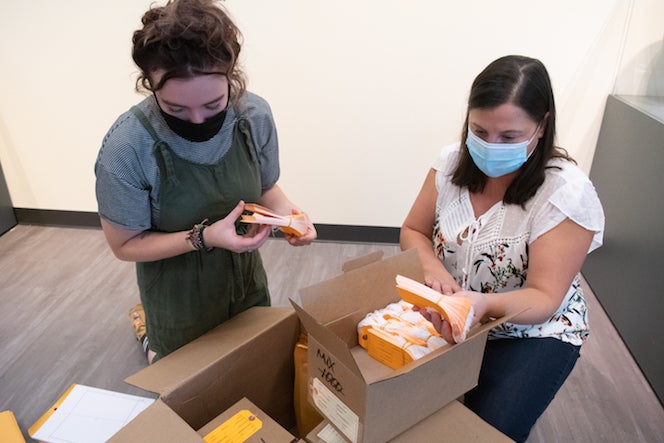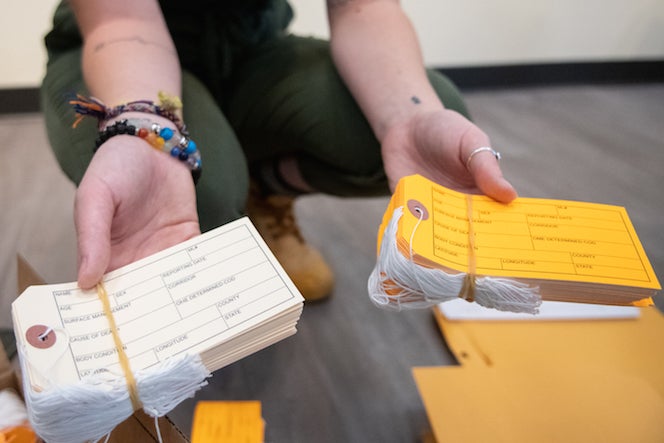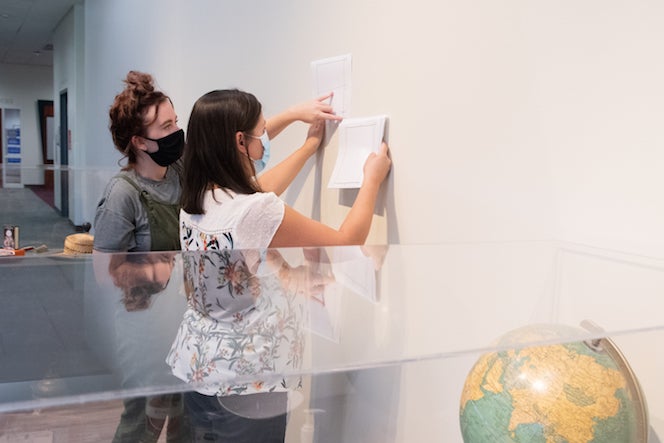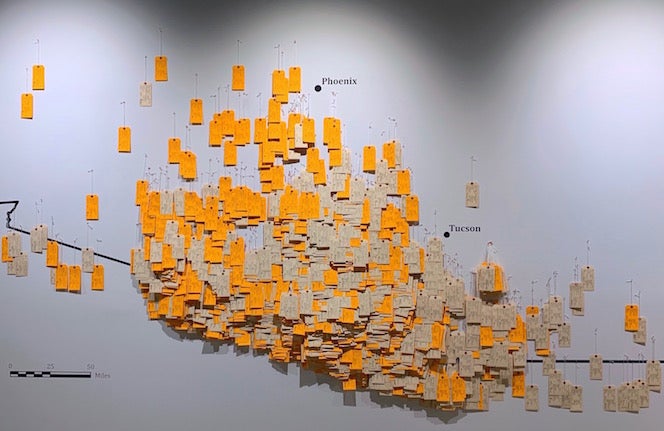
Hostile Terrain 94, a participatory art project, details the dangers of undocumented migration in a way that is elegant even as it is heartbreaking.
The installation consists of a 10- by 20-foot map of the Arizona/Mexico border and 3,200 handwritten toe tags. Each tag represents a body of a person who died crossing Arizona’s Sonoran Desert between the mid-1990s and 2019. The tags are geolocated at sites where human remains were found, thanks to information provided by forensic anthropologists working with the Pima County Office of the Medical Examiner and Humane Borders Inc., a humanitarian organization supported by donations from individuals and religious groups across many faiths.
This fall, Hostile Terrain 94 will hang in sites around the world including Los Angeles, New York, Philadelphia, Detroit, Seattle, Miami, Mexico City, San Pedro Sula (Honduras), San Salvador (El Salvador), and Lampedusa (Italy) and the Boise State Student Union Building.

Lisa Meierotto, an assistant professor in the School of Public Service’s global studies program, and students in her 400-level Global Migration and the Environment class are bringing Hostile Terrain 94 to campus with help from the global studies program. Other partners include the Boise State Student Union Building, members of Boise State’s staff and faculty, Casita Nepantla, and the Idaho Museum of International Diaspora.
“You hear that thousands of people have died. It’s just a number. But when you see the toe tags, when you have the physical sensation of the pin going into the map and you see the names, it becomes real,” said Meierotto, who recently became interim director of Boise State’s certificate in human rights program.

The educational goals of the exhibit include “deepening people’s understanding of the issues surrounding the U.S/Mexico border region, including the critical human rights concerns,” said Meierotto.
“Participants will engage in an active learning experience. We anticipate a variety of responses to the exhibition and are welcoming students, campus and community members to reflect upon their experience and engage in dialogue.”
Hostile Terrain 94, Meierotto said, respects the lives of people and honors their deaths.
More powerful than conversation
The piece’s name references the year 1994, the beginning of the U.S. immigration enforcement strategy known as Prevention Through Deterrence. The strategy concentrated border patrol in urban areas to push people attempting to cross the border illegally into remote and often deadly regions — or hostile terrain — where the natural environment would act as a deterrent.
Despite this, according to the Undocumented Migration Project, the nonprofit research-arts-education collective that created the exhibition, more than six million people have attempted to migrate through the Southern Arizona desert since 2000. Prevention Through Deterrence has spread to Texas and remains the primary enforcement strategy on the U.S./Mexico border today.
Senior Tessa Hurley is project manager for the Boise State exhibition. Hurley grew up in Montana and Salmon, Idaho, before graduating from Timberline High School in Boise. She will leave Boise State this semester with a degree in global studies, Spanish and nonprofit management.
“I’ve talked about border issues in all of my classes at Boise State. But here in Idaho, we don’t always have direct exposure to them. We have a large refugee community, but don’t always see the impacts of that community,” said Hurley. “With this exhibition we want people to see the physical impact of something that’s really happening. A visual piece like this is so much more powerful than sitting down and having a conversation.”
Hostile Terrain 94 is meant to be “raw and real,” she added. “The more people we reach, that’s the point. Outreach and education.”
Asking for help from the community on campus and beyond
To install the piece, students and Meierotto will divide toe tags into 300 envelopes with 100 tags each, then reach out to other students, community groups and campus organizations to hand-write the names of the fallen. Students will begin affixing the tags in the Fine Arts Gallery on the second floor of the Student Union Building on Oct. 1. Meierotto invites members of the Boise State community to visit the installation in progress. The exhibition will remain on campus through Nov. 13.

The pandemic has changed some of the planned programming, but Meierotto is offering a virtual screening of the documentary “Border South” on Oct. 20. Those interested in writing tags or viewing the film should contact Meierotto for a code: lisameierotto@boisestate.edu.
- See the “Border South” trailer.
- Read more about Hostile Territory 94, sponsored by the Undocumented Migration Project.
- See data about deaths in the desert gathered by Humane Borders, Inc.
– Story by Anna Webb